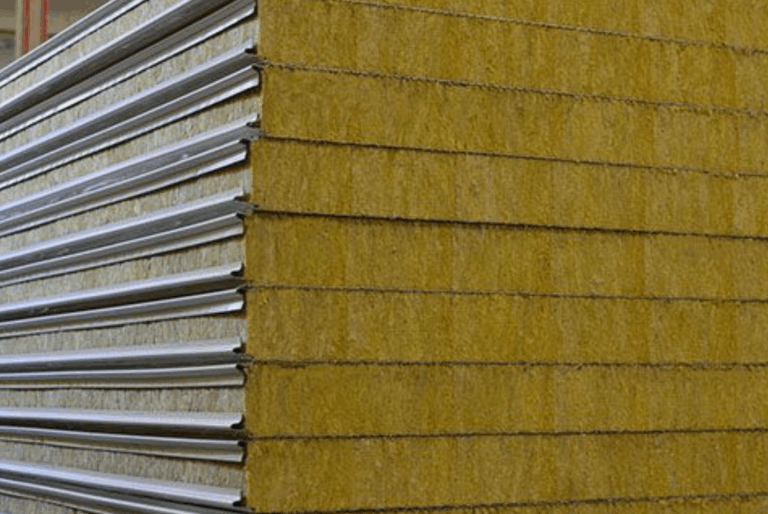When it comes to construction projects, understanding the key components of a building’s structure is crucial. Among these, roof panels and ceiling panels play vital roles in both functionality and aesthetics. While they may seem similar at first glance, the difference between roof and ceiling panels is significant and impacts various aspects of building design and performance.
We’ll explore the world of roof and ceiling panels, shedding light on their unique characteristics, applications, and the importance of proper insulation. Whether you’re a homeowner planning a renovation or a construction professional seeking to expand your knowledge, this article will provide valuable insights into these essential building elements.
We’ll begin by defining what roof panels and ceiling panels are, then delve into their key differences in terms of purpose, applications, and materials. Additionally, we’ll discuss the critical role of roof and ceiling insulation in enhancing energy efficiency and comfort, including the often-overlooked benefit of noise reduction.
What are roof and ceiling panels?
Roof and ceiling panels are vital components in construction, each serving unique functions within a building.
Roof panels are the outermost layer of a building’s roof, designed to protect against weather elements such as rain, snow, and sunlight. They provide structural support and contribute to energy efficiency through insulation. Their primary role is to ensure the integrity of the building while minimizing heat transfer, which helps reduce energy costs.
Ceiling panels, in contrast, are interior elements that form the visible upper surface of a room. They serve both functional and aesthetic purposes, enhancing the look of a space while concealing utilities like wiring and ductwork.
Key features of roof panels include:
- Weather resistance
- Structural integrity
- Insulation properties
For ceiling panels, important characteristics are:
- Acoustic control
- Decorative appeal
- Versatility in materials
The difference between roof and ceiling panels
Roof and ceiling panels serve distinct purposes in building construction, with key differences in their applications and materials:
Purpose and applications
Roof panels are primarily designed for external protection. They shield the building from weather elements like rain, snow, and UV rays. These panels contribute significantly to a structure’s insulation and energy efficiency. Roof panels are crucial for maintaining the building’s integrity and preventing water infiltration.
In contrast, ceiling panels are interior components focused on aesthetics and functionality within living spaces. They conceal structural elements, electrical wiring, and ductwork while enhancing room acoustics and lighting. Ceiling panels also play a role in fire safety and can provide additional insulation between floors in multi-story buildings.
Material variations
Roof panels are typically made from durable, weather-resistant materials such as:
- Metal (steel, aluminum)
- Asphalt shingles
- Concrete or clay tiles
- Synthetic materials (e.g., rubber or plastic composites)
These materials are chosen for their ability to withstand harsh outdoor conditions and provide long-lasting protection.
Ceiling panels, being interior components, are often made from lighter, more decorative materials like:
- Gypsum board
- Fiberglass, foam, or mineral wool for insulation
- Wood or wood-like composites
- Acoustic tiles
These materials are selected for their aesthetic appeal, sound absorption properties, and ease of installation in interior spaces.
The choice of materials for both roof and ceiling panels depends on factors such as climate, building design, budget, and specific functional requirements of the space.
Importance of roof and ceiling insulation
Proper insulation in both roof and ceiling structures is crucial for maintaining a comfortable and energy-efficient building. Effective insulation helps regulate indoor temperatures, reduce energy costs, and create a more sustainable living environment.
Roof insulation serves as the primary barrier against heat transfer between the interior and exterior of the building. Well-insulated roof panels can significantly reduce heating and cooling costs by minimizing heat gain in summer and heat loss in winter. This not only improves comfort but also reduces the strain on HVAC systems, leading to lower energy consumption and reduced carbon footprint.
Ceiling insulation complements roof insulation by providing an additional layer of temperature control. In multi-story buildings, it helps maintain consistent temperatures between floors and reduces energy transfer between different areas of the structure. Properly insulated ceilings also contribute to a more even distribution of heating and cooling throughout the living spaces.
Noise Reduction Properties
An often-overlooked benefit of both roof and ceiling insulation is their ability to reduce noise transmission. Proper insulation can significantly dampen external sounds, creating a quieter and more comfortable indoor environment.
Roof insulation helps block out noise from rain, hail, and other environmental factors. This is particularly beneficial in areas with high precipitation or near airports where aircraft noise can be a concern.
Ceiling insulation plays a crucial role in reducing sound transmission between floors in multi-story buildings. It can effectively minimize footstep noise, voices, and other sounds from adjacent rooms or upper floors. This noise reduction property is especially valuable in apartment buildings, offices, or homes where maintaining privacy and a peaceful atmosphere is important.
By investing in quality insulation for both roof and ceiling structures, building owners can create a more comfortable, energy-efficient, and acoustically pleasant environment for occupants.





